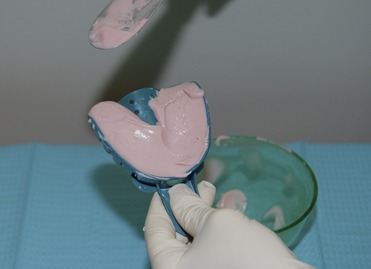chapter 13 Impression Materials, Concepts, and Techniques for Dental Implants
With the development of new instrumentations and new techniques, the availability of better quality impression materials became imperative. For example, although it was possible to produce extremely fine detail as well as maintain good dimensional stability with plaster, the fact that it was inelastic limited its use in impression making. Thus, the goal of researchers and clinicians was to develop materials that had elastic properties, were easy to handle, and still retained good accuracy and dimensional stability.1–10
Today’s dentist has a number of different choices of impression materials, including agar-agar, alginates, polysulfides, silicones, and polyethers. Each has its advantages and disadvantages. The correct choice is dictated by the particular prosthodontic case and depends on a number of different factors, such as accuracy (immediate and time-dependent), dimensional stability, handling properties, hardness, elasticity, working time, esthetic appearance, odor, shelf life, cost, and acceptance by the dentist and patient (Figure 13-1).
Requirements for Implant Prosthetics
Dimensional Stability: Dimensional stability, defined as the change in accuracy with respect to time, is an important factor when a particular impression material is chosen. For most impression materials, accuracy is best maintained by pouring the cast as soon as possible after recording the impression. However, when it is not convenient for the dentist to cast the model, the impression has to be sent to a dental laboratory. If the laboratory is not on the same premises or is a long distance from the dentist’s office, the delay between recording the impression and fabricating the cast can be several hours or even days (Figure 13-2).
Stay updated, free dental videos. Join our Telegram channel

VIDEdental - Online dental courses




